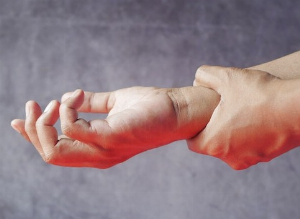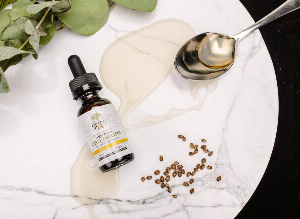Ankylosing spondylitis: treating pain with heat and cold
Published 19 Dec 2022 • By Claudia Lima
More than 220,000 adults in the UK are affected by ankylosing spondylitis. The pain caused by this condition often prevents patients from carrying out simple everyday tasks.
Treatments for ankylosing spondylitis are either symptomatic or disease-modifying. Among natural treatments, using heat and cold is one of the most popular.
How can it help with the pain?
Read our article to find out!

Ankylosing spondylitis is a chronic inflammatory disease which affects the joints of the spine, hips or lower back, and the causes of which are still unknown.
Its main symptoms are pain and fatigue, caused by acute inflammation of the enthesis, the part of the bone where tendons, ligaments and capsules are inserted. When the inflammation subsides, it leaves a scar made up of fibrous tissue, which gradually ossifies.
Treatments for spondyloarthritis include a combination of medication, exercise and physiotherapy.
Physiotherapy methods include the use of heat and cold to relieve various symptoms (including pain).
Thermotherapy, what is it?
The alternation of heat and cold to treat pain is known as thermotherapy.
It is a technique that offers multiple benefits to the body, without mobilising too many resources. It consists of using temperature variations to relieve joint and/or muscle pain, contractures, cramps and aches.
How can using cold help with pain caused by ankylosing spondylitis?
Cold has an anti-inflammatory and vaso-constrictive action that relieves acute pain in case of trauma. It reduces the production of inflammatory molecules such as cytokines or prostaglandins.
Cold allows the nerve conduction of the fibres to be anaesthetised and also prevents oedema. This is why its action is analgesic.
For example, for ankylosing spondylitis, it is advisable to apply a cold or frozen compress to the hot and inflamed joint for a few minutes, as this promotes blood circulation and reduces pain and swelling. However, be careful not to make the affected joint stiffer, and do not apply it if it is already stiff. Cold reduces the flexibility of the tissue.
Cold relief is short-lived and its prolonged use is not recommended as it can disrupt tissue repair and therefore healing.
To apply cold correctly, you need to:
- Place a gel pack (or ice cubes or small frozen weights) on the painful area,
- Protect the area with a cloth to avoid skin reactions,
- Leave it on for 15 to 20 minutes maximum,
- Repeat after 2 hours if necessary.
How can using heat help with pain caused by ankylosing spondylitis?
Heat is relaxing. It causes muscles to relax and promotes tissue elasticity. This is linked to vasodilation, which improves blood circulation.
Heat is most often used for muscle contractures and tensions.
In the case of ankylosing spondylitis, heat can help with morning stiffness, for example, taking a hot shower upon getting up. This can help relax muscles and relieve pain and stiffness in the back and joints.
However, heat has no effect on inflammation.
To apply heat correctly, you need to:
- Heat a gel pack (or hot water bottle) and place it on the painful area,
- Protect the area with a cloth,
- Leave it on for 15 to 20 minutes maximum,
- Renew after 2 hours, if necessary.
Thermotherapy is widely used for various conditions and traumas nowadays. There are many accessories available for sale to allow the application of heat or cold to relieve pain.
These accessories include thermal compresses (or pockets or pouches) that are placed in the microwave or freezer, multiform hot water bottles, cooling towels, thermal pads, heating patches, ice bladders and even air-conditioned mattress toppers.
As with any therapeutic method, this one must also be applied with care, in order to avoid burns, for example. Cold or heat should never be applied directly to the skin.
Thermotherapy is therefore beneficial in cases of ankylosing spondylitis, although there are some contraindications, including for people who:
- suffer from an infectious disease, skin disease or acute inflammation,
- have venous insufficiency,
- use pacemakers or intrauterine devices with a metallic component,
- have metal implants in the areas where heat or cold need to be applied.
Do not hesitate to talk to your doctor, only he or she can tell you if it is right for you to use heat or cold therapy to relieve pain associated with ankylosing spondylitis.
Take care!
Sources :
Comprendre la spondylarthrite ankylosante, ameli.fr
Quelles sont les causes de la SPA, vidal.fr
Soulager la douleur avec du froid et du chaud, sante.lefigaro.fr
Quand mettre du chaud et du froid sur une douleur ? toutpourmasante.fr
Mechanims nad efficacy of heat and cold therapies, pubmed.gov
La thermothérapie, techniciendesante.fr

 Facebook
Facebook Twitter
Twitter


